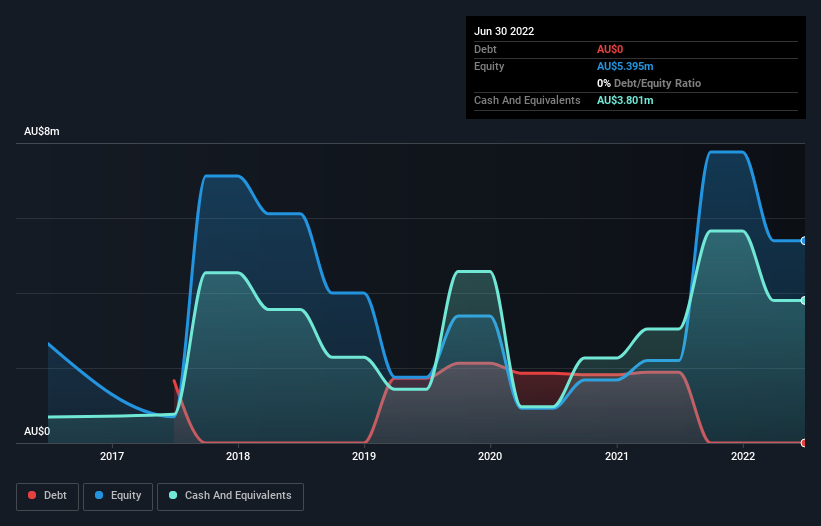We're Keeping An Eye On Jayride Group's (ASX:JAY) Cash Burn Rate
We can readily understand why investors are attracted to unprofitable companies. For example, although software-as-a-service business Salesforce.com lost money for years while it grew recurring revenue, if you held shares since 2005, you'd have done very well indeed. Having said that, unprofitable companies are risky because they could potentially burn through all their cash and become distressed.
So, the natural question for Jayride Group (ASX:JAY) shareholders is whether they should be concerned by its rate of cash burn. In this article, we define cash burn as its annual (negative) free cash flow, which is the amount of money a company spends each year to fund its growth. First, we'll determine its cash runway by comparing its cash burn with its cash reserves.
See our latest analysis for Jayride Group
How Long Is Jayride Group's Cash Runway?
A company's cash runway is calculated by dividing its cash hoard by its cash burn. As at June 2022, Jayride Group had cash of AU$3.8m and no debt. Importantly, its cash burn was AU$5.4m over the trailing twelve months. So it had a cash runway of approximately 8 months from June 2022. That's quite a short cash runway, indicating the company must either reduce its annual cash burn or replenish its cash. You can see how its cash balance has changed over time in the image below.
How Is Jayride Group's Cash Burn Changing Over Time?
In our view, Jayride Group doesn't yet produce significant amounts of operating revenue, since it reported just AU$2.6m in the last twelve months. Therefore, for the purposes of this analysis we'll focus on how the cash burn is tracking. During the last twelve months, its cash burn actually ramped up 72%. While this spending increase is no doubt intended to drive growth, if the trend continues the company's cash runway will shrink very quickly. In reality, this article only makes a short study of the company's growth data. You can take a look at how Jayride Group is growing revenue over time by checking this visualization of past revenue growth.
How Hard Would It Be For Jayride Group To Raise More Cash For Growth?
Since its cash burn is moving in the wrong direction, Jayride Group shareholders may wish to think ahead to when the company may need to raise more cash. Issuing new shares, or taking on debt, are the most common ways for a listed company to raise more money for its business. One of the main advantages held by publicly listed companies is that they can sell shares to investors to raise cash and fund growth. We can compare a company's cash burn to its market capitalisation to get a sense for how many new shares a company would have to issue to fund one year's operations.
Since it has a market capitalisation of AU$32m, Jayride Group's AU$5.4m in cash burn equates to about 17% of its market value. As a result, we'd venture that the company could raise more cash for growth without much trouble, albeit at the cost of some dilution.
How Risky Is Jayride Group's Cash Burn Situation?
Even though its cash runway makes us a little nervous, we are compelled to mention that we thought Jayride Group's cash burn relative to its market cap was relatively promising. Looking at the factors mentioned in this short report, we do think that its cash burn is a bit risky, and it does make us slightly nervous about the stock. On another note, Jayride Group has 6 warning signs (and 2 which are a bit concerning) we think you should know about.
If you would prefer to check out another company with better fundamentals, then do not miss this free list of interesting companies, that have HIGH return on equity and low debt or this list of stocks which are all forecast to grow.
Have feedback on this article? Concerned about the content? Get in touch with us directly. Alternatively, email editorial-team (at) simplywallst.com.
This article by Simply Wall St is general in nature. We provide commentary based on historical data and analyst forecasts only using an unbiased methodology and our articles are not intended to be financial advice. It does not constitute a recommendation to buy or sell any stock, and does not take account of your objectives, or your financial situation. We aim to bring you long-term focused analysis driven by fundamental data. Note that our analysis may not factor in the latest price-sensitive company announcements or qualitative material. Simply Wall St has no position in any stocks mentioned.
Join A Paid User Research Session
You’ll receive a US$30 Amazon Gift card for 1 hour of your time while helping us build better investing tools for the individual investors like yourself. Sign up here

